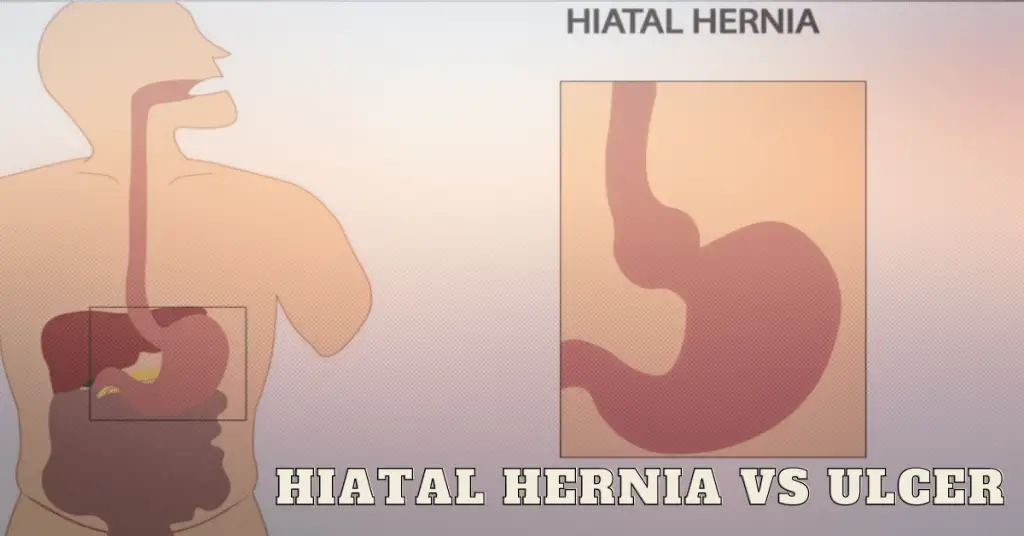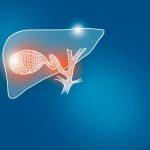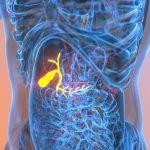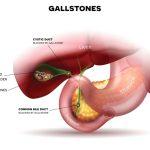Frida Mom 2-in-1 Postpartum Pads, Absorbent Perineal Ice Maxi Pads, Instant Cold Therapy Packs and Maternity Pad in One
20% OffIntroduction:
Understanding the variations between hiatal hernia and ulcers is critical for correct analysis and remedy. At the same time as both situations can reason digestive soreness, they can be awesome in terms of reasons, symptoms, and remedies. In this text, we will offer an outline of hiatal hernia and ulcer, and shed light on the variations among these digestive situations.
1. Digestive System Overview:
The digestive system performs an essential position in breaking down meals, soaking up vitamins, and eliminating waste from the body. It involves numerous organs operating collectively to make certain the right digestion and nutrient absorption.
Key Organs involved within the Digestive system:
1. Mouth: Digestion starts off evolving inside the mouth, where meals are routinely damaged down by chewing and blended with saliva.
2. Esophagus: The esophagus is a muscular tube that connects the mouth to the belly, permitting meals to pass from the mouth to the stomach by peristaltic contractions.
3. Belly: The stomach secretes digestive enzymes and acids to break down food further. It also allows the absorption of positive nutrients.
4. Small intestine: The small intestine is where maximum digestion and nutrient absorption arise. It consists of three components: the duodenum, jejunum, and ileum.
5. Large intestine (Colon): The big gut absorbs water and electrolytes from digested food, forming strong waste (stool) earlier than removal.
2. Understanding Hiatal Hernia:
A.Definition and explanation:
Hiatal hernia is a circumstance characterized by the protrusion of a portion of the stomach into the chest cavity by the diaphragm. The diaphragm is a muscle that separates the chest hollow space from the belly hollow space. In a hiatal hernia, the belly pushes up by a gap in the diaphragm referred to as the hiatus.
Differentiating between sliding and paraesophageal hiatal hernias.
There are two essential sorts of hiatal hernia:
1. Sliding Hiatal Hernia: this is the most common type, where the junction between the esophagus and the belly slides up and down into the chest hollow space. It’s typically associated with gastroesophageal reflux disorder (GERD).
2. Paraesophageal Hiatal Hernia: In this uncommon kind, a part of the belly pushes by the diaphragm and lies beside the esophagus. This sort of hernia is considered greater serious as it can result in headaches like strangulation or obstruction of the belly.
B. Causes and Risk Factors:
The precise cause of hiatal hernia is often unknown. But, a few factors which can contribute to its improvement encompass:
1. Weakness in the diaphragm muscle groups.
2. Expanded stress in the abdominal cavity, along with obesity or pregnancy.
3. Age-related changes inside the diaphragm and supportive tissues.
The risk factors associated with the condition:
Certain factors growth the hazard of developing hiatal hernia:
1. Age: The chance will increase with age, as the muscular tissues and tissues within the diaphragm weaken through the years.
2. Obesity: Excess weight puts extra strain on the abdomen and might contribute to herniation
3. Smoking: Smoking weakens the muscle mass, along with the ones within the diaphragm, making herniation much more likely.
C. Symptoms and Diagnosis:
The symptoms experienced by individuals with hiatal hernia:
Many human beings with hiatal hernia may not notice any symptoms. But, when signs do arise, they can consist of:
1. Heartburn and acid reflux disorder
2. Chest pain or discomfort
3. Issue swallowing
4. Belching or hiccups
5. Regurgitation of stomach contents
Diagnostic methods and tests are used to diagnose the condition.
To diagnose hiatal hernia, healthcare vendors might also carry out the subsequent exams:
1. Barium swallow X-ray: A liquid containing barium is swallowed, and X-rays are taken to visualize the esophagus and stomach.
2. Upper endoscopy: a skinny, flexible tube with a digicam is inserted by the mouth and down the esophagus to have a look at the digestive tract.
3. Esophageal manometry: This test measures the stress and muscle contractions within the esophagus.
D. Treatment Options:
Lifestyle Modifications:
Coping with hiatal hernia symptoms frequently involves making sure lifestyle adjustments, along with:
1. Consuming smaller, extra frequent food to reduce stress on the stomach.
2. Avoiding trigger foods that can worsen signs, including spicy or fatty meals, caffeine, and alcohol.
3. Maintaining a wholesome weight through a normal workout and a balanced weight-reduction plan.
Medications:
Medications may be prescribed to manipulate hiatal hernia symptoms, which include:
1. Antacids: those help neutralize belly acid and offer relief from heartburn.
2. Proton pump inhibitors (PPIs): these reduce stomach acid production and can help heal esophageal inflammation.
3. H2 blockers: those medications decrease the production of stomach acid and may allele symptoms.
Potential side effects and considerations.:
It’s far critical to be aware of capacity aspect results and issues when taking medicines for hiatal hernia. Commonplace facet consequences may also encompass nausea, diarrhea, and headache. It’s miles really helpful to visit a healthcare professional concerning appropriate medication usage and any ability interactions with other medications.
Surgical Interventions:
Surgical options for hiatal hernia repair.
In intense instances or whilst lifestyle adjustments and medicines fail to offer relief, surgical intervention may be taken into consideration. Surgical alternatives for hiatal hernia repair include:
1. Nissen Fundoplication: This process involves wrapping the higher part of the belly around the lower esophagus to enhance the valve and save you from acid reflux.
2. Hiatal Hernia Mesh repair: in this procedure, a mesh is used to reinforce the weakened region of the diaphragm.
Procedures, Benefits, and Risks Involved.:
Surgical interventions for hiatal hernia repair can offer long-term comfort from symptoms. Benefits of surgical operation might also consist of reduced acid reflux, progressed high-quality of existence, and a decreased need for medication. However, all surgical strategies convey certain dangers, together with infection, bleeding, and headaches associated with anesthesia.
Understanding Ulcers:
A. Definition and explanation:
Ulcers are open sores that expand on the lining of the stomach or the higher part of the small intestine, called the duodenum. They’re a result of the erosion of the protecting lining, exposing the underlying tissues to digestive juices. Ulcers are a commonplace circumstance within the digestive device.
Differentiating between gastric and duodenal ulcers.:
There are two predominant varieties of ulcers:
1. Gastric Ulcers: Gastric ulcers broaden in the stomach lining. They may frequently be resulting from an imbalance among the stomach’s shielding mechanisms and the harmful effects of stomach acid and digestive enzymes.
2. Duodenal Ulcers: Duodenal ulcers occur inside the top part of the small intestine, known as the duodenum. They’re generally caused by the bacterium Helicobacter pylori (H. Pylori) or long-term use of nonsteroidal anti-inflammatory drugs (NSAIDs).
B. Causes and Risk Factors:
The primary reasons for ulcers consist of:
1. H. Pylori contamination: H. Pylori is a common bacterium that could disrupt the protecting layer of the belly or duodenum, leading to ulcer formation.
2. Nonsteroidal anti-inflammatory capsules (NSAIDs): long-term use of NSAIDs, such as aspirin or ibuprofen, can growth the chance of growing ulcers with the aid of annoying the belly lining.
Risk factors, such as Helicobacter pylori infection and NSAID use.
Sure factors boom the danger of growing ulcers:
1. H. Pylori contamination: individuals infected with H. Pylori have a better probability of developing ulcers.
2. NSAID Use: normal or extended use of NSAIDs can make contributions to the improvement of ulcers.
C. Symptoms and Diagnosis:
The common symptoms associated with ulcers.:
The signs and symptoms of ulcers can vary but generally encompass:
1. Burning or gnawing belly pain
2. Nausea or vomiting
3. Indigestion or bloating
4. Lack of urge for food
5. Weight loss
The diagnostic methods used to identify ulcers:
To diagnose ulcers, healthcare carriers may also use the subsequent methods:
1. Upper Endoscopy: a skinny, bendy tube with a digicam is inserted by the mouth to take a look at the digestive tract and perceive the presence of ulcers.
2. Breath take a look at: This takes a look at detecting the presence of H. Pylori by using reading the breath after ingesting a particular substance.
D. Treatment options:
Medications:
Medications are usually prescribed to deal with ulcers:
1. Proton Pump Inhibitors (PPIs): PPIs lessen stomach acid production, allowing the ulcers to heal. They may be exceedingly effective in treating ulcers because of H. Pylori and NSAID use.
2. Antibiotics: Antibiotics are used to remove H. Pylori contamination, which can assist in ulcer healing and prevent their recurrence.
Explaining their mechanisms and potential side effects.
PPIs work using blockading the enzyme answerable for producing belly acid. Ability facet consequences may also encompass headaches, diarrhea, and stomach ache. Antibiotics can also motivate side results inclusive of nausea, vomiting, or hypersensitive reactions.
Lifestyle Modifications
Life-style adjustments can assist control ulcers and save you from their recurrence:
1. Comply with a wholesome eating regimen: Devour a balanced weight loss plan wealthy in fruits, vegetables, entire grains, and lean proteins. Keep away from spicy meals, caffeine, alcohol, and smoking.
2. Strain reduction: Manage strain by techniques like rest sporting events, meditation, or conducting activities you experience.
Endoscopic methods:
In a few instances, endoscopic procedures can be important for ulcer remedy:
1. Endoscopic Hemostasis: This system stops bleeding from an ulcer with the aid of injecting medications or making use of thermal power to cauterize the bleeding web page.
2. Endoscopic Ulcer Closure: the usage of clips or sutures, an endoscope is used to shut larger ulcers to sell restoration.
Benefits and potential complications.
Endoscopic interventions are minimally invasive and can effectively treat ulcers. Blessings consist of decreased hospitalization time and faster restoration. However, headaches may additionally encompass bleeding, infection, or perforation, even though those are uncommon.
Hiatal Hernia vs Ulcer: Key Differences:
There are several key variations among hiatal hernia and ulcers:
1. Causes: Hiatal hernia is ordinarily because of a weakening of the diaphragm muscle mass, even as ulcers can result from elements like H. Pylori infection or lengthy-time period NSAID use.
2. Anatomy: Hiatal hernia includes the protrusion of the stomach into the chest cavity, while ulcers are open sores at the belly or duodenal lining.
3. Symptoms: Hiatal hernia signs and symptoms normally include heartburn, chest ache, and difficulty swallowing. Ulcer signs and symptoms can include abdominal ache, indigestion, and weight reduction.
4. Diagnostic techniques: Hiatal hernia is usually recognized by imaging assessments like barium swallow X-ray or endoscopy. Ulcers are diagnosed through endoscopy or breath tests to detect H. Pylori contamination.
Similar Symptoms and Overlapping Conditions:
There are a few symptoms that can be common between hiatal hernia and ulcers, which include heartburn, indigestion, and abdominal ache. However, the underlying reasons and unique characteristics of the symptoms can assist differentiate between the two situations.
Other conditions may present with similar symptoms.
Different situations which could gift with comparable symptoms consist of gastroesophageal reflux disease (GERD), gastritis, and gallbladder problems. It’s far crucial to consult with a healthcare expert to appropriately perceive the underlying cause of the signs and symptoms.
Summary:
In precis, hiatal hernia and ulcers are awesome digestive situations with distinctive reasons, signs, and diagnostic techniques. Hiatal hernia involves the protrusion of the belly into the chest cavity because of the diaphragm’s weak point, even as ulcers are open sores at the belly or duodenal lining because of elements like H. Pylori contamination or NSAID use. Even though some signs can overlap, it’s far vital to are looking for scientific recommendations for proper prognosis and treatment.
Reinforcing the importance of seeking medical advice for proper diagnosis and treatment.
In case you experience continual digestive signs and symptoms, it is vital to discuss them with a healthcare expert for an accurate analysis. They could perform vital exams, inclusive of endoscopy or breath assessments, to decide the underlying reason for your signs and symptoms and offer suitable treatment pointers.
Frequently Asked Questions (FAQs)
Can a hiatal hernia lead to an ulcer?
At the same time as hiatal hernia itself does not at once cause the development of ulcers, it could make contributions to acid reflux disease, which, if left untreated, may additionally result in the formation of ulcers.
What lifestyle changes can help manage both hiatal hernia and ulcers?
Are there any natural remedies for hiatal hernias and ulcers?
For both hiatal hernia and ulcers, way-of-life modifications can help manage signs. These may include:
- keeping a healthy weight
- eating a smaller, more common food
- keeping off cause ingredients that worsen signs and symptoms
- managing stress levels
- elevating the top whilst slumbering
Concerning natural remedies, it is beneficial to talk about them with a healthcare professional before attempting any alternative treatments, as their effectiveness may range and person conditions can also require precise scientific interventions.
Conclusion:
Understanding the differences between hiatal hernia and ulcers is important for the correct prognosis and suitable treatment. While they will share some symptoms, their reasons, anatomical locations, and diagnostic techniques range. Seeking medical advice is essential for proper diagnosis and personalized remedy tips. By addressing the underlying causes and making essential way of life adjustments, individuals can correctly control these situations and improve their exceptional of life.
Dr. Ahmed Raza, a renowned gastroenterologist with over 20 years of experience, is the dedicated founder of LifeWithNoGallbladder. With a passion for improving gallbladder health, Dr. Raza shares extensive insights, records, and guidance through his blog, providing individuals with the necessary information to make informed decisions.















